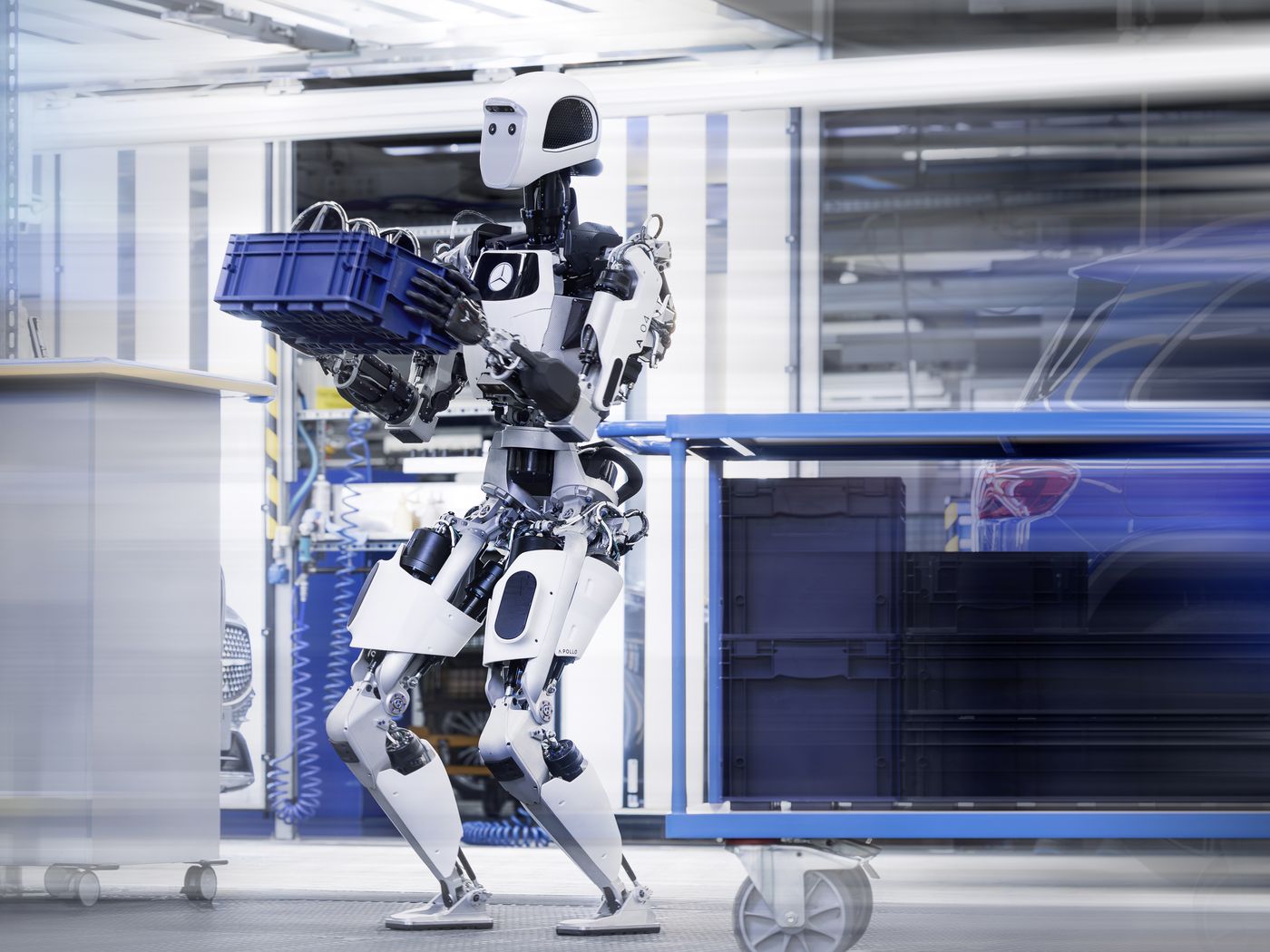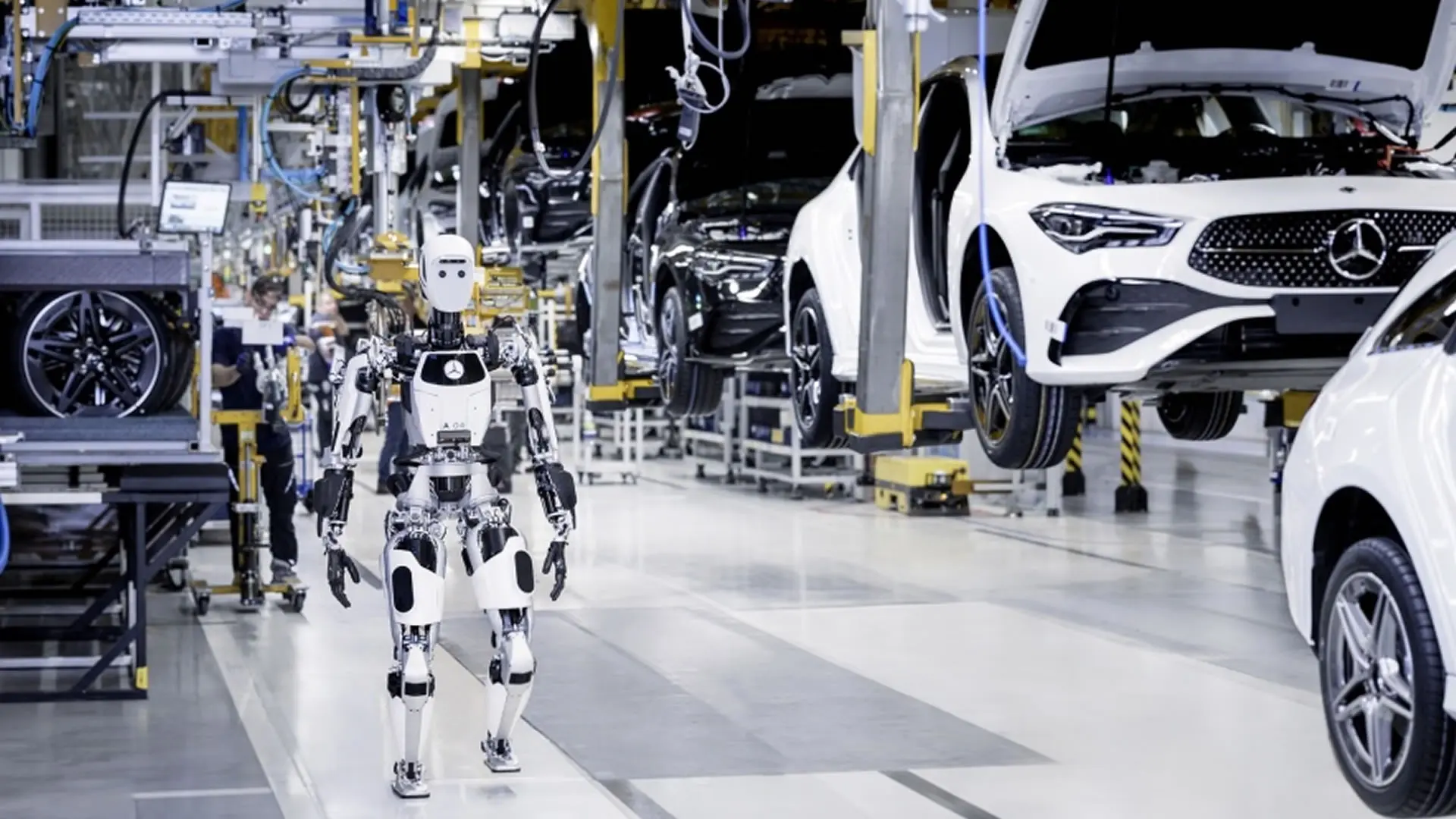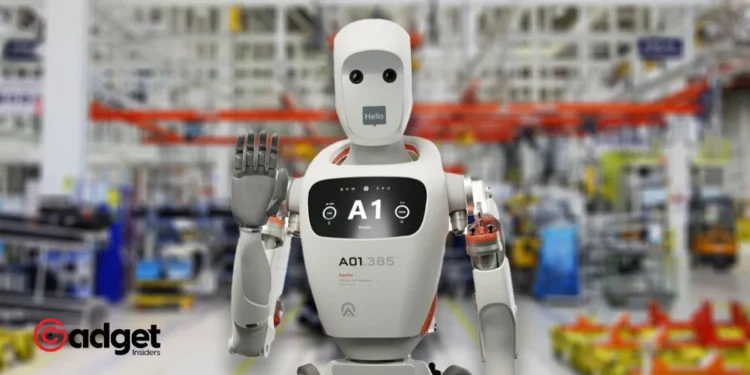Mercedes-Benz is pioneering the future of automotive production by integrating Apptronik’s Apollo humanoid robots into its factories, a groundbreaking move aimed at enhancing efficiency and redefining labor dynamics. This strategic decision not only underscores Mercedes-Benz’s commitment to innovation but also sets a precedent for how robotics can be symbiotically integrated into industrial environments.

The Dawn of a New Era in Manufacturing
In a recent announcement, Mercedes-Benz revealed its plans to employ Apollo humanoid robots for tasks that are physically demanding and considered low-skill. This initiative is part of a broader strategy to leverage robotics and AI technologies to optimize production processes and improve workplace ergonomics.
Jeff Cardenas, CEO of Apptronik, highlighted the significance of this collaboration, stating, “Mercedes plans to use robotics and Apollo for automating some low-skill, physically challenging, manual labor—a model use case which we’ll see other organizations replicate in the months and years to come.”
Apollo: The Future of Robotic Assistance
Apollo stands out with its human-like design, boasting a height of 5’8″, and weighing 160 pounds. It is capable of lifting to 55 pounds and operates for four hours on a single battery pack.
Unlike traditional robots, Apollo features a unique combination of physical attributes and technological capabilities, including arms, legs, and eyes with LED lights. Its chest-mounted screen can display various types of information, further augmented by a facial screen capable of showing expressions or status icons.
Meet Apollo, the robot that will work at Mercedes-Benz factories#MercedesBenz is adding Apptronik's #Apollo humanoid #robots to its factories. The robot's run time is 4 hours per battery pack.
Read more: https://t.co/cdgw8TLcTi pic.twitter.com/gTM4sdbtcQ
— The Times Of India (@timesofindia) March 18, 2024
Notably, Apollo’s design allows for flexibility in operation. Its battery packs are interchangeable, and while it is capable of mobility, the robot can also be mounted on a metal post for stationary tasks.
Enhanced safety measures are integrated, such as halting movement when an object or person is detected within its “impact zone.” Moreover, Apollo can be controlled remotely, even with a game controller-like device, showcasing its adaptability to different operational contexts.
Mercedes-Benz: Pioneering a Vision for the Future
Jörg Burzer, a member of the Mercedes-Benz Group management board, emphasized the transformative potential of robotics in automotive manufacturing.
“To build the most desirable cars we continually evolve the future of automotive production: Advancements in robotics and AI open up new opportunities also for us,” he remarked.
This initiative reflects Mercedes-Benz’s proactive approach to exploring new technologies, aiming to enhance productivity while also alleviating the physical strain on its workforce.
The Broadening Horizon of Robotics
The development of Apollo by Apptronik, which previously contributed to NASA’s Valkyrie robot, marks a significant milestone in robotic technology. However, the landscape of robotics is rapidly expanding beyond Apptronik’s innovations.
Other notable developments include Figure’s humanoid robots, capable of conversing using OpenAI’s ChatGPT model, and Lenovo’s award-winning Daystar GS robot, designed for comprehensive data collection.

Embracing the Robotic Revolution
Mercedes-Benz’s adoption of humanoid robots like Apollo signifies a pivotal shift in manufacturing paradigms, blending human ingenuity with robotic precision to create the automobiles of the future. This approach not only optimizes production processes but also opens new avenues for enhancing the skill sets of the human workforce.
As we stand on the brink of what seems like a science fiction future, the collaborative synergy between humans and robots in industrial settings heralds a new age of innovation and efficiency.










